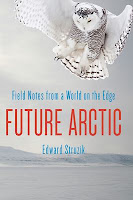Summer is just around the corner and that means fishing, camping, hiking, and traveling, but we've also got 10 ideas for great things to do with SLAM this summer.
10. Join us for the Grand Opening of the Father Andrew P. Kashevaroff State Library, Archives, and Museum on June 6, 2016. This community celebration is an opportunity for us to welcome Juneauites and visitors to the new facility, and we can't wait to share it with you.
9. If you just can't wait for June 6 or are looking for some VIP treatment, then get your tickets for the
Friends of the State Library, Archives, and Museum special preview on Saturday, June 4, 5:30-8:30. There will be live music, delicious hors d'ouevres, and a no host bar, and a rare opportunity to go behind the scenes. Tickets are $75 for Friends members and $100 for non-members. For more information, visit
the Friends website. Tickets are on sale now from JAHC and both locations of Hearthside Books.
 |
| The construction fence came down this week, so people can enjoy walking through the grounds. The Friends special preview will be the first chance to get inside. |
8. Participate in summer reading at your local library. If you have young children, help prevent summer slide by reading, learning, and creating with free activities at the library. If you're child-free, many public libraries are now offering adult summer reading programs, where you can win great prizes, join book groups, and expand your reading interests.
7. Take a tour of the new permanent exhibits in the Alaska State Museum, on your own or guided by one of the Museum's volunteer docents. All the exhibits have been completely re-imagined, updated, and expanded with the help of community curators from around the state. You'll find artifacts that you've never seen before, as well as familiar favorites, and make new connections across cultures.
6. Come dance your heart out at a
Rock Around the Block Party!
Every Friday from June 10 through August 26, there will be live music
and dancing on our Pivot Plaza next to Nimbus, and delicious eats at the
food trucks on the JACC lawn from 5:00 to 7:30 pm.
 |
| Image courtesy of the Juneau Arts and Humanities Council |
5. Enjoy the summer's temporary show, "Living Alaska," a 10-year retrospective of contemporary artwork by Alaskan artists purchased by museums with funds from Rasmuson Foundation, on tour from the Anchorage Museum.
Read the rave review in Alaska Dispatch News.
4. Research Alaskan history in the new, combined Historical Collections and Archives Research Center. For the first time, researchers can visit one location to delve into territorial records, historical photos, maps, and manuscripts.
 |
| Looking for information about the Iditarod? You can read telegrams from the Archives, look at photos from the Historical Collections, or browse a 1925 newspaper on microfilm. |
3. Relax in the new Richard Foster Reading Room, where you can enjoy an unbeatable view, read an Alaskan newspaper or magazine, or study on your own. We'll have wi-fi, public computers, and plenty of outlets, where you can plug in, recharge, and relax.
 |
| One of the views from the Reading Room looks back on our old home in the State Office Building, but others look down the Channel, toward Mount Juneau, or over the Willoughby district. |
2. Eat lunch in our atrium while observing the eagles in the new Eagle Tree exhibit, getting lost in Walter Gordinier's Glacial Ponding glasswork, or sitting on Martin Shelton's exquisite wood benches.
1. Brush up your Shakespeare during
First Folio! The Book that Gave Us Shakespeare, on tour from the Folger Shakespeare Library. We are Alaska's host site for this national traveling exhibit, which will be on display from July 26 through August 24, and we'll have tons of great lectures, activities, and events for Shakespeare fans of all ages.
 |
| An original First Folio of Shakespeare's works, printed in 1623, will be on display for four weeks in our new building. |
It's going to be a great summer! Hope to see you at SLAM.

















































